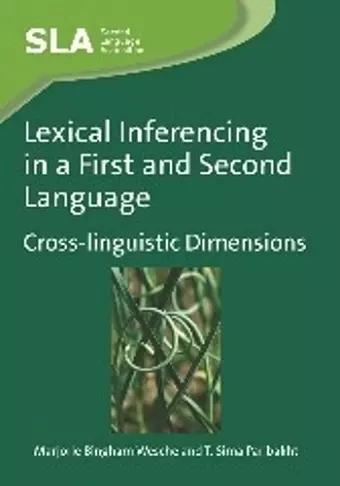Lexical Inferencing in a First and Second Language
Cross-linguistic Dimensions
Marjorie Bingham Wesche author T Sima Paribakht author
Format:Paperback
Publisher:Channel View Publications Ltd
Published:26th Nov '09
Currently unavailable, and unfortunately no date known when it will be back

This book presents a comprehensive review of previous research on lexical inferencing, co-authored by Kirsten Haastrup, and a major new trilingual study of lexical inferencing by both first (L1) and second language (L2) readers. Research since the 1970s on this apparently universal cognitive process in L2 reading and vocabulary learning is surveyed, including the kinds of knowledge and textual cues L2 readers use when inferring unknown word meanings, factors influencing their success and knowledge retention, and relevant theory. A comparative study of L1 and L2 lexical inferencing by Persian and French and English speakers is then presented, focusing on evidence of L1 transfer in the L2 inferencing process, its success and readers’ gains in L2 word knowledge. Influences of the specific L1 are distinguished from those of native versus non-native proficiency, relative cultural familiarity of texts, readers’ L2 proficiency, text language features and other factors. The relative typological distance between readers’ L1 and L2 is reflected in systematic differences between L1 speakers of Persian and French in their L2 lexical inferencing. Implications are drawn for L2 instruction at advanced levels.
In this study of lexical inference several topical and important strands in SLA research are woven together to form an impressive whole: lexical knowledge, cross-linguistic influence, reading comprehension and the difference between L1-and L2-speakers. The tests are skilfully planned and executed and lead to a convincing discussion of the results. This will be a most useful book for anyone working in the field of SLA.
-- Håkan Ringbom, Emeritus Professor of English, Åbo Akademi University, FinlandOne valuable suggestion made by the authors in the light of this study is that when large typological distances exist, reading and vocabulary instruction should include explicit work on morphology, and even special attention to the commonest words in the L2 that are not lexicalized in the L1. Although this already exists in many ELL programs, the new Wesche and Paribakht’s study helps provide confirmatory evidence of the value of such exercises, as well as for the inferencing training that also commonly occurs in instructed L2 contexts.
-- Ron Martinez, School of English Studies, University of Nottingham * Book reviews / System 39 (2011) 113-1ISBN: 9781847692221
Dimensions: 210mm x 148mm x 12mm
Weight: 288g
216 pages